Related Research Articles

Visual art of the United States or American art is visual art made in the United States or by U.S. artists. Before colonization, there were many flourishing traditions of Native American art, and where the Spanish colonized Spanish Colonial architecture and the accompanying styles in other media were quickly in place. Early colonial art on the East Coast initially relied on artists from Europe, with John White the earliest example. In the late 18th and early 19th centuries, artists primarily painted portraits, and some landscapes in a style based mainly on English painting. Furniture-makers imitating English styles and similar craftsmen were also established in the major cities, but in the English colonies, locally made pottery remained resolutely utilitarian until the 19th century, with fancy products imported.

Gilbert Stuart was an American painter born in the Rhode Island Colony who is widely considered one of America's foremost portraitists. His best-known work is an unfinished portrait of George Washington, begun in 1796, which is usually referred to as the Athenaeum Portrait. Stuart retained the original and used it to paint scores of copies that were commissioned by patrons in America and abroad. The image of George Washington featured in the painting has appeared on the United States one-dollar bill for more than a century and on various postage stamps of the 19th century and early 20th century.

Rembrandt Peale was an American artist and museum keeper. A prolific portrait painter, he was especially acclaimed for his likenesses of presidents George Washington and Thomas Jefferson. Peale's style was influenced by French neoclassicism after a stay in Paris in his early thirties.
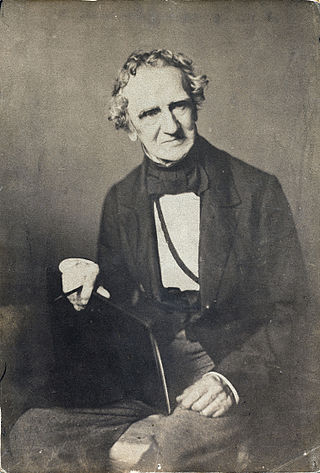
Thomas Sully was an English-American portrait painter. He was born in England, became a naturalized American citizen in 1809, and lived most of his life in Philadelphia, Pennsylvania, including in the Thomas Sully Residence. He studied painting in England under Benjamin West. He painted in the style of Thomas Lawrence and has been referred to as the "Sir Thomas Lawrence of America".
Jacob Cox was an American landscape and portrait painter in Indianapolis, Indiana. Several of his paintings are in the Morris-Butler House. He is also known for his paintings of Indiana Governors James B. Ray, Noah Noble, David Wallace, Samuel Bigger, Joseph A. Wright, and Henry S. Lane. In 1941 a retrospective exhibition of his works was held at the John Herron Art Museum.

African-American art is known as a broad term describing visual art created by African Americans. The range of art they have created, and are continuing to create, over more than two centuries is as varied as the artists themselves. Some have drawn on cultural traditions in Africa, and other parts of the world where the Black diaspora is found, for inspiration. Others have found inspiration in traditional African-American plastic art forms, including basket weaving, pottery, quilting, woodcarving and painting, all of which are sometimes classified as "handicrafts" or "folk art".
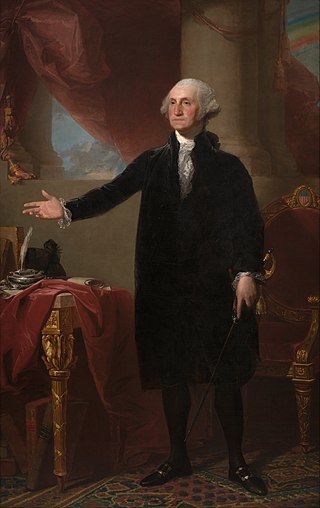
The Lansdowne portrait is an iconic life-size portrait of George Washington painted by Gilbert Stuart in 1796. It depicts the 64-year-old president of the United States during his final year in office. The portrait was a gift to former British Prime Minister William Petty, 1st Marquess of Lansdowne, and spent more than 170 years in England.

Henry Inman was an American portrait, genre, and landscape painter.

Francis Bicknell Carpenter was an American painter born in Homer, New York. Carpenter is best known for his painting First Reading of the Emancipation Proclamation of President Lincoln, which is hanging in the United States Capitol. Carpenter resided with President Lincoln at the White House and in 1866 published his one-volume memoir Six Months at the White House with Abraham Lincoln. Carpenter was a descendant of the New England Rehoboth Carpenter family.

Chauncey Bradley Ives was an American sculptor who worked primarily in the Neo-classic style. His best known works are the marble statues of Jonathan Trumbull and Roger Sherman enshrined in the National Statuary Hall Collection.

George Winter was an English-born landscape and portrait artist who immigrated to the United States in 1830 and became an American citizen in northern Indiana's Wabash River valley. Winter was one of Indiana's first professional artists. In addition, he is considered the state's most significant painter of the first half of the nineteenth century. Winter is especially noted for his sketches, watercolors, and oil portraits that provide a visual record of the Potawatomi and Miami people in northern Indiana from 1837 to the 1840s, as well as other figures drawn from his firsthand observations on the American frontier.

Elenore Plaisted Abbott (1875–1935) was an American book illustrator, scenic designer, and painter. She illustrated early 20th-century editions of Grimm's Fairy Tales,Robinson Crusoe, and Kidnapped. Several books were published as illustrated by Elenore Plaisted Abbott and Helen Alden Knipe.

Jacob Eichholtz (1776–1842) was an early American painter, known primarily for his portraits in the Romantic Victorian tradition. Born in Lancaster, Pennsylvania in a family of prosperous Pennsylvania Germans, he spent most of his professional life in Philadelphia. A coppersmith by trade, he turned to painting and achieved both recognition and success despite being mainly self-taught as an artist. He is known to have painted over 800 portraits over the course of 35 years. Hundreds of his works are housed in art museums, historical societies, and private collections throughout the United States.
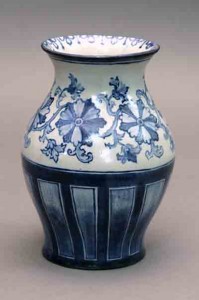
Susan Stuart Goodrich Frackelton (1848–1932) was an American painter, specializing in painting ceramics. She was a leader in the Arts and Crafts movement in the United States and author of Tried by Fire, the "most popular handbook for decorators of chinaware", having reached a national audience.

Alfred Jacob Miller was an American artist best known for his paintings of trappers and Native Americans in the fur trade of the western United States. He also painted numerous portraits and genre paintings in and around Baltimore during the mid-nineteenth century.

William Lukens Elkins was an American businessman and art collector. He began his working career as a grocer in Philadelphia and became a business tycoon with financial interests in oil, natural gas and transportation. He was one of the first to convert oil to gasoline and became a founding partner and major shareholder of Standard Oil after selling his refining business to John D. Rockefeller. He partnered with Peter Widener to found the Philadelphia Rapid Transit Company and developed streetcar and railway systems throughout several major cities in the United States. He founded the United Gas Improvement Company and was a member of the board of directors of 24 companies. He was a collector of art and filled his Elkins Estate with over 132 paintings. The exact value of his estate at the time of death is unknown, though today it would likely be worth several billion dollars, due to his substantial holdings in various companies and extensive art collection.
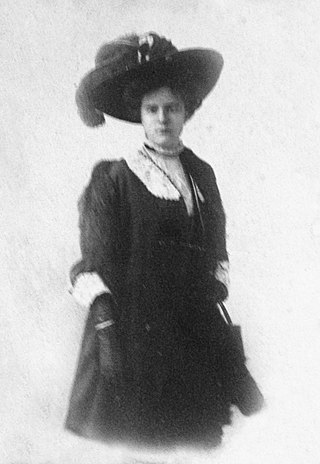
Alice Brown Chittenden was an American painter based in San Francisco, California who specialized in flowers, portraits, and landscapes. Her life's work was a collection of botanicals depicting California wildflowers, for which she is renowned and received gold and silver medals at expositions. She taught at the Mark Hopkins Institute of Art from 1897 to 1941.
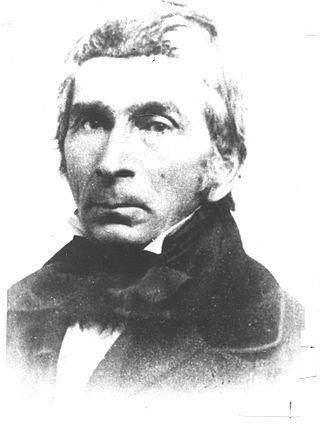
Sheldon Peck was an American folk artist, conductor on the Underground Railroad, and social activist. Peck's portraiture – with its distinctive style — is a prime example of 19th century American folk art. He also become known for advocating abolitionism, racial equality, temperance, public education, women's rights, and pacifism.

George Henry Hall (1825–1913) was an American still-life and landscape artist. He studied art in Düsseldorf and Paris and he worked and lived in New York City, the Catskills of New York and in Europe. His works are in museum collections in the United States and Europe. Over the course of his career he sold 1,659 paintings.
Richard Pauling was a portrait and landscape artist who was active in the United States, England and Canada in the mid-nineteenth century. His work is in the collections of Library and Archives Canada, the New York Historical Society, the Albany Institute of History and Art, and the Louisiana State Museum.
References
- ↑ 1860 United States Federal Census. United States Census Bureau. p. 92.
- ↑ L.R. Jacobs, Illinois Historical Art Project
- ↑ Gadsden Museum contact page Archived November 28, 2011, at the Wayback Machine